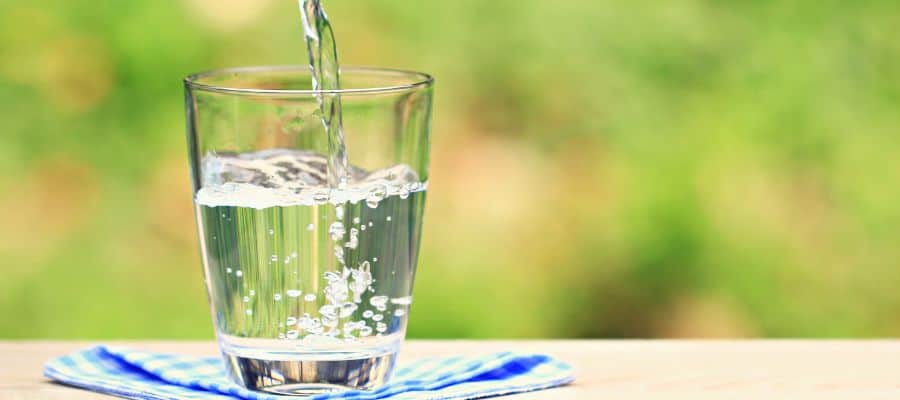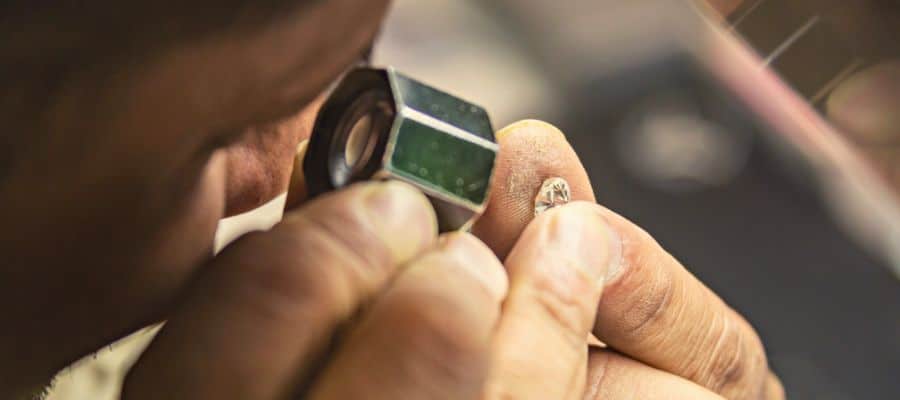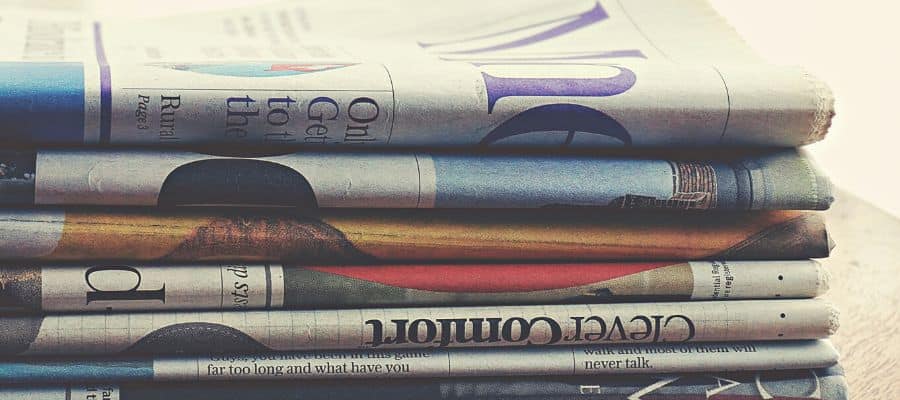Diamonds are known for their unique, alluring outer appearance. If one wants to buy a diamond, its authenticity is the first thing to ensure, as they aren’t exactly the cheapest of crystals. So, what exactly happens when you breathe on a diamond?
If you breathe on a diamond, the heat from your breath will cast a light fog on its surface. Diamond has excellent thermal conductivity, and that fog should resolve and disappear quickly. Its authenticity is questionable if the fog stays on for a few seconds.
Now you know that breathing on a diamond is a way to test out its genuineness. If you’re still skeptical about your diamond’s origin, read on, as I’ll go more in-depth about efficient ways to test the crystal’s authenticity.
Will Breathing on a Diamond Make It Fog Up?

Diamond’s beauty never goes unnoticed. That’s why many attempts to make the most believable look-alike have occurred in the past.
White sapphire and moissanite are better-known diamond lookalikes. However, they have very different properties than a diamond.
Nevertheless, there are still ways that you can easily and quickly test a gem’s purity. Believe it or not, a simple act such as breathing on a diamond is enough to test its authenticity.
You might wonder what breathing has to do with diamonds and how you can tell if the diamond you own is real with such a technique. Well, let me explain.
Diamond Is an Excellent Conductor of Heat
Diamonds are made of carbon atoms that are rigidly bonded, meaning that the thermal energy transmits rather quickly.
This would also mean that there are no free electrons, which results in a lack of electricity flow.
Simply put, there is no need for a flow of electrons for a diamond to conduct heat. Vibration in the atom itself passes the heat from one atom to another.
Now how is that knowledge applicable in testing the diamond’s authenticity?
The Fog Test
You will need a functioning pair of lungs and a diamond to do this test correctly. Yes, it’s that simple.
Take a deep breath and lightly blow on your diamond. You will notice that the surface of the diamond is a little foggy now.
The fog should immediately disappear with real diamonds because of its aforementioned heat-conducting properties.
If the fog lingers for a little while, you’re probably dealing with a fake.
How To Tell if a Diamond Is Fake
The last thing you would want to find out after purchasing such a pricey crystal is that it’s fake.
Considering there are such first-class copies of diamonds, figuring out whether the crystal is genuine might be a tough job.
But don’t worry; there are a few ways to tell if you’re dealing with a fake diamond. Besides a fog test, there are many reliable ways to help you test a diamond’s genuineness in your home without needing a fancy laboratory or any instruments.
The Water Test

You will need a glass of water and a diamond to do this properly.
Gently put your diamond in the glass of water. If it floats, then it doesn’t have the density of a real diamond, so you’ll be able to tell that it’s fake.
A real diamond should fall to the bottom of the glass due to its high density. Diamond’s density is up to three times higher than the density of water.
However, this method shouldn’t be your only resort, as some fake diamonds drop down to the bottom of the glass too. You should use it only as a guide in the right direction.
Magnifying Glass Test

You would expect a diamond to be without flaws, known for its undeniably unique appeal and widespread recognition.
Well, as it is in nature, nothing and no one is flawless.
Sometimes, the flaws make something whole and special, which is often the case with diamonds. While not all diamonds have imperfections (typically the most expensive ones), many do have a few imperfections, even if they’re not visible to the naked eye.
To use this method, you will need a magnifying glass. If you don’t have a magnifying glass at home, there are many great options to choose from online, and one of them is this Gyanduli Handheld Magnifying Glass that magnifies up to 10X.
In a well-lit room, look at your diamond with the magnifying glass. If it’s a real diamond, you may be able to see small defects. This, however, will only be the case if the diamond is not flawless (VVS1 or 2).
Newspaper Test

An already-read, day-old newspaper is good for nothing but to throw it out, right?
You should wait out on that one.
Put your diamond in the newspaper and try your best to read any words you might see. If you can read anything, even if it’s blurry, I am sorry to be the bearer of bad news; the diamond you own likely isn’t authentic.
This test proves that diamonds bend light in many directions, so you cannot see anything through them.
Watch this YouTube video to see how the newspaper test is done in practice:

The Scratch Test
A real diamond is incredibly durable, and it shouldn’t have marks or scratches on it even if you try to scratch it! If you try to scratch a mirror with your diamond and it leaves a mark, however, you’re likely dealing with a fake.
With this method, there’s a catch.
While it is true that a diamond should be able to scratch the mirror, any gemstone that is harder than glass should be able to do the same. So not only will you unnecessarily ruin a mirror, you’ll still not be able to surely tell if the diamond you own is a real deal.
Final Thoughts
By the end of this article, I hope you are more aware of the risks of buying a diamond with an unknown origin.
Buying a diamond requires a lot of research as they’re an investment meant to last you a lifetime.
If, after all of these hacks that I showed you, you’re still unsure whether your diamond is genuine, take it to a professional jeweler for an examination, as a trained professional is bound to put your mind at ease.
If you found this article useful, make sure you save this pin below to your Jewelry board.


